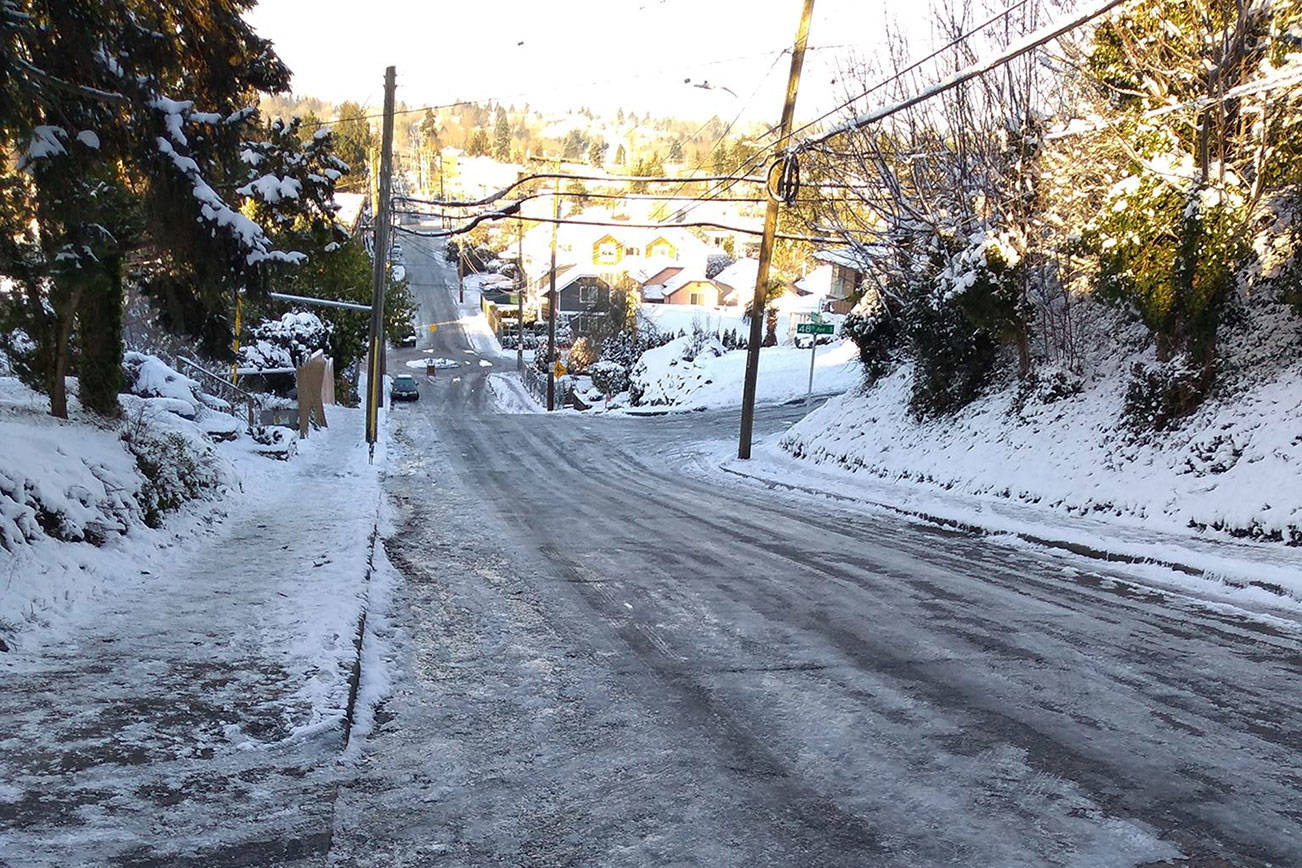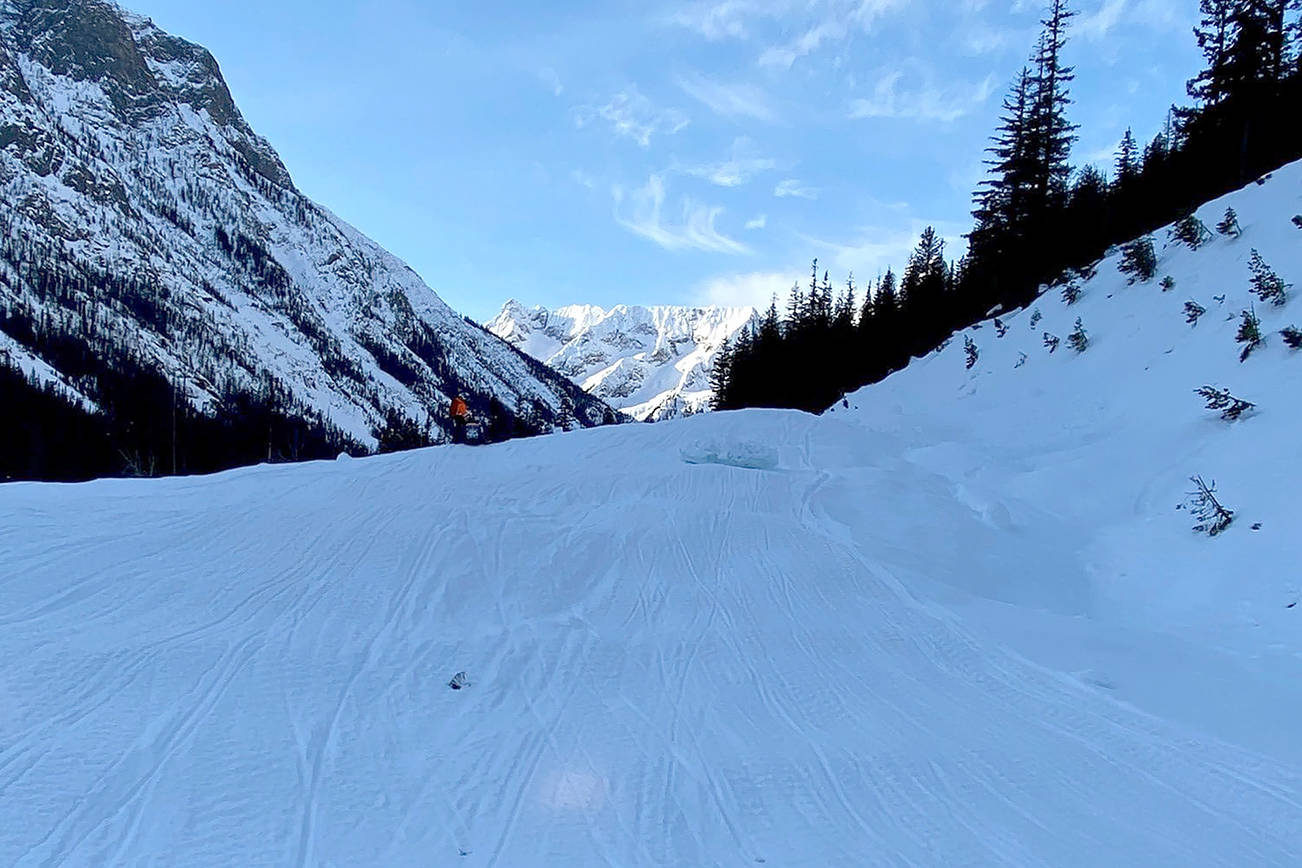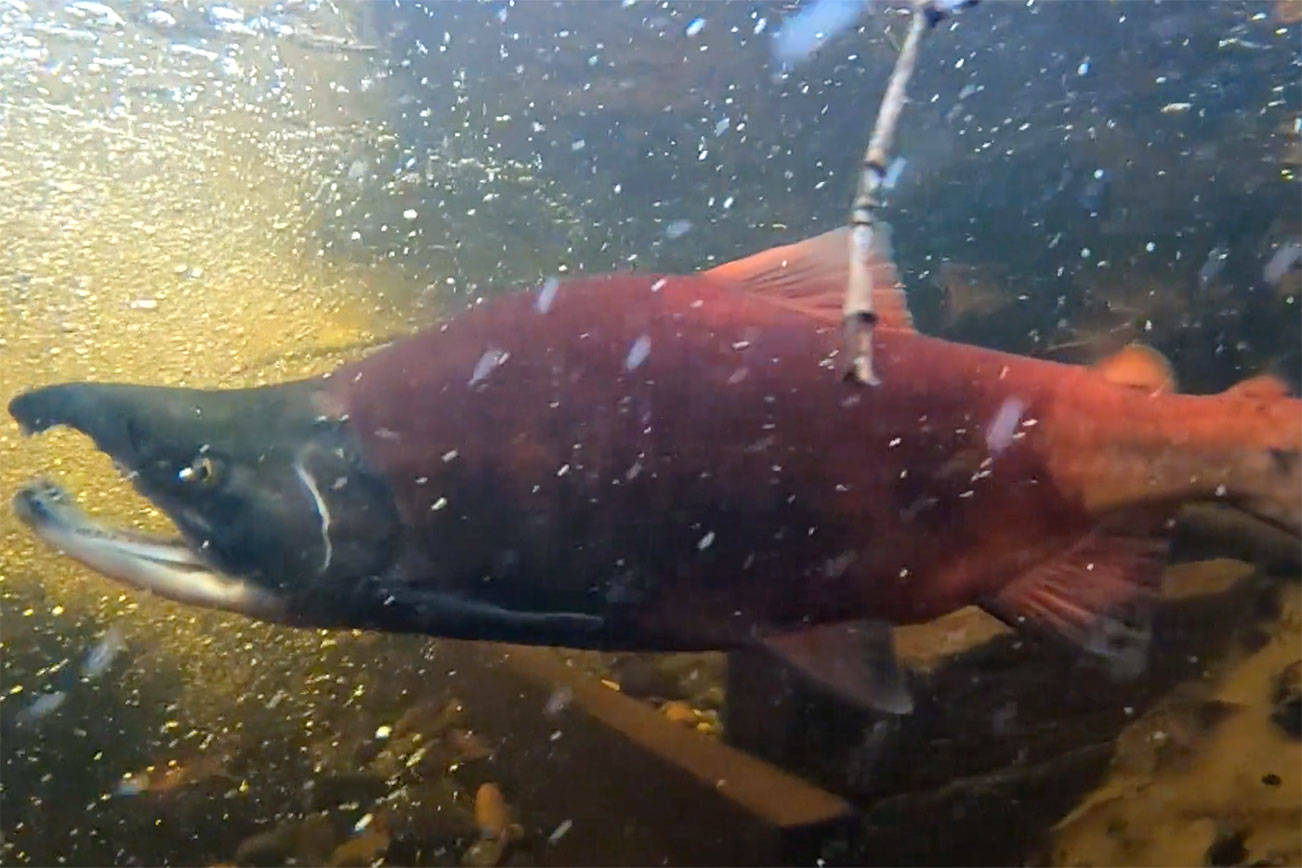A winter storm covered the Puget Sound region in snow and ice on Sunday and Monday, leading schools and offices to shut down as people were snowed in — and there is more snow expected.
Snow in King County ranged from 2 to 10 inches beginning Sunday and continuing into the next morning. National Weather Service meteorologist Mike McFarland said there could be even more snow on the way beginning Friday or Saturday and another chance early next week stemming from a pressure system similar to the one that just blew through.
“It’s a little early to show much confidence,” he said. “Things don’t have to change very much for it to be a disappointment if you like snow, but it looks like a very similar type of thing.”
This cold snap was caused by a ridge that King County has been under most of the winter, moving further out to sea and shifting north into Alaska, clearing way for cold air from Canada to pour into Washington state. McFarland said two snowstorms in the same week is a fairly unusual weather pattern for Seattle, but one that does happen. Even though there is a chance of snow later this week, McFarland said it will likely be relatively light, although he stressed it is too early to tell for sure. As of Tuesday afternoon, there was a 50 percent chance of snow on Friday, Feb. 8.
“It’s not the sort of pattern that would produce heavy, heavy snow,” he said.
University of Washington professor and weather expert Cliff Mass said the snow distribution will likely be different from Monday’s storm because the storm’s low system is farther offshore.
“Somebody in this region is going to get a lot of snow on Friday and Saturday,” Mass said.
Seattle is infamous for its reaction to snow, and drivers here often get a reputation for being unable to navigate it. Mass said this is largely due to the way snow falls in the area and maybe not people’s inability to drive. He said wet snow starts falling on warm roadways and turns to slush. This freezes over during the night and creates sheets of ice.
“Almost all of our events start that way, then through the next day cold air comes through,” he said.
Seattle has adjusted how it handles snow since a sweeping 2008 winter storm crippled the city for weeks, and inaction from the city meant roads were not properly cleared at the time. Mass said this kneecapped former Seattle Mayor Greg Nickels’s political career and led to the city’s Department of Transportation rethinking its response.
Since then, Seattle has given priority to arterial roads, clearing snow and ice before it has a chance to freeze. But many side roads are left to melt on their own.
“The minor arterials they don’t keep, they don’t deal with, and so they just ice up,” Mass said.
To fix that, the city would likely need to invest millions of dollars more into equipment for relatively rare snowstorms. This could include putting salt brine or potassium chloride on the roads before a storm, raising the freezing point for snowfall, before plowing the roads during the snowstorm and putting down another layer of antifreeze. Neighbors could also shovel roads and sidewalks to keep them clear. People who live on hills or other unserviced roads could park at the bottoms of hills near arterial roads so they can get to and from work.
Seattle Department of Transportation spokesperson Ethan Bergerson said the city begins preparing for winter storms as early as the summer while conducting inventories and training. Major arterials, which are given priority, can be seen at the city’s winter weather response map.
Bergerson said city crews began coating roads in anti-icing agents on Saturday, and crews have been working around the clock for 48 hours.
“Once you have ice buildup, in a lot of ways then it’s really too late to do anything else once the ice has bonded to the roadway,” he said. “Our focus is on being ready for the next one. We’re already gearing up for that.”
Crews will likely begin pre-treating roads on Thursday before the snow starts and follow a similar plan through the next storm. The city has around 35 plows in addition to some 15 sidewalks maintenance crews who are beginning to take a well earned break. Bergerson also said the community’s response to storms is important and that people should stay home or take public transit if possible.
“It’s really everyone’s responsibility to do their part whether by making good choices or people’s decisions to keep the sidewalks outside their homes or businesses clear,” he said.
On the Interstate 5 corridor, the state Department of Transportation had around 100 plows and trucks clearing the highway between King County and the Canadian border on Monday, the according to the Bellevue Reporter. Two of these trucks were hit by drivers on Sunday.








